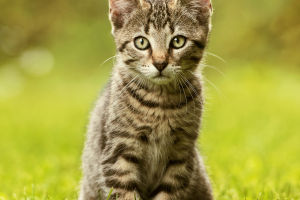Can Rabbits Talk? Understanding Rabbit Sounds for Effective Communication
Rabbits, beloved for their fluffy demeanor and gentle nature, communicate through a variety of sounds. With a bit of attention, you can reveal much about their emotions and needs.
Achieving barrier-free communication with these adorable creatures involves understanding their vocal cues and nuances. Lykkers, check the guide here to decoding rabbit sounds and recommendations for some charming rabbit breeds to consider.
Understanding Rabbit Sounds
1. Contentment Purring: Similar to a cat’s purr, rabbits often emit a soft, rhythmic purring sound when they are relaxed and content. This gentle vibration indicates happiness and comfort, usually heard when they are being petted or are resting peacefully.
2. Teeth Grinding: Contrary to cats, rabbits grind their teeth not out of distress but as a sign of contentment. This low, soft sound indicates pleasure, especially during grooming or cuddling sessions.
3. Honking or Grunting: Rabbits can make honking or grunting sounds, which can vary in intensity and pitch. These noises often signal annoyance, displeasure, or a demand for attention, such as when they want food or to be let out of their enclosure.
4. Squealing or Shrieking: In situations of extreme fear or pain, rabbits may emit high-pitched squeals or shrieks. These sounds are distress signals and require immediate attention to address the cause of their discomfort.
5. Thumping: When rabbits thump their hind legs forcefully against the ground, it serves as a warning signal to alert others of potential danger. This behavior is instinctive and helps them communicate danger to their human companions.
Understanding these sounds allows rabbit owners to respond appropriately to their pets’ emotional needs, fostering a deeper bond and ensuring their well-being.
How To Communicate With Your Rabbit
Video by Sincerely, Cinnabun
Recommendation: Cute Rabbit Breeds
1. Holland Lop: With their floppy ears and compact size, Holland Lops are renowned for their sweet temperament and adorable appearance. They are affectionate and make wonderful companions for families.
2. Mini Lop: Similar to the Holland Lop but slightly larger, Mini Lops are known for their friendly nature and easygoing personality. They are playful and enjoy interacting with their owners.
3. Netherland Dwarf: The Netherland Dwarf is one of the smallest rabbit breeds, prized for its petite size and distinctive round face. They are energetic and curious, often forming strong bonds with their human caregivers.
4. Lionhead: Named for their distinctive mane of fur around their heads, Lionhead rabbits are gentle and sociable. They enjoy human company and can be quite affectionate once they bond with their owners.
Choosing a rabbit breed involves considering their temperament, grooming needs, and space requirements. Each breed has its unique traits, but all can make delightful companions with proper care and attention.
While rabbits may not speak in words, they communicate effectively through their vocalizations and behaviors. Understanding these cues is crucial for building a strong relationship based on mutual trust and companionship. By listening attentively to their sounds and observing their body language, humans can achieve barrier-free communication with these enchanting animals, enriching both their lives and those of their beloved furry friends.


